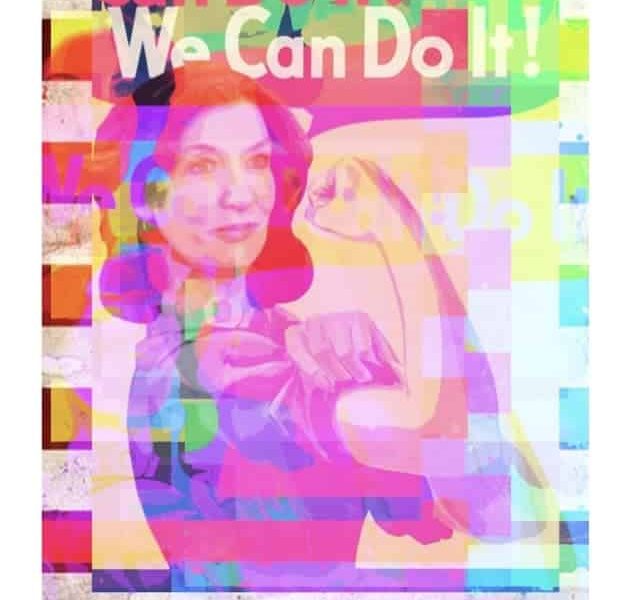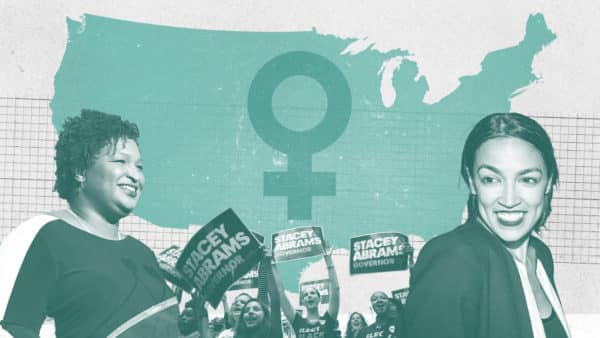
WASHINGTON (WOMENSENEWS)–The year was 1999, and a young female basketball player was introducing Hillary Rodham Clinton at a New York event promoting Title IX, the law that prohibits discrimination against women and girls in sports and education.
Standing beneath a banner that said “Dare to Compete,” with tennis legend Billie Jean King nearby, the tall athlete leaned over and whispered into the first lady’s ear: “Dare to compete, Mrs. Clinton. Dare to compete.”
It’s a story that Clinton tells often as she appeals, in particular, to female listeners, upon whom she is heaping attention and outreach.
Apart from the heated issue of abortion, issues of particular concern to women
–such as wage parity, paid sick leave and contraceptive equity–tend to garner occasional headlines but rarely make it onto the list of the nation’s top priorities.
In her campaign, Clinton stresses the war in Iraq and health care–widely considered the nation’s two top priorities–and also frequently talks about Social Security and Medicare, the economy, energy and education.
But Clinton also speaks out about Title IX and other women’s concerns to an exceptional degree, says Sarah Brewer, associate director of the Institute for Women and Politics at American University in Washington, D.C. “I don’t see Obama and Edwards as public on traditional women’s issues,” Brewer said of Clinton’s leading Democratic rivals Sen. Barack Obama and former Sen. John Edwards.
Marie Wilson, president of the White House Project, a nonpartisan New York organization dedicated to electing women to public office, said Clinton’s attention helps boost often marginalized issues. “It’s the power that’s the big difference . . . She can stand up and talk about this and have it be important.”
Web Site Distinct
None of the other leading candidates currently focuses on the wage gap–or prioritizes issues perceived as women’s issues other than abortion–on their campaign Web sites.
“Clinton is the only one who has anything up about women’s issues . . . which is why we need women’s leadership,” said Heidi Hartmann, president of the Institute for Women’s Policy Research, a think tank in Washington, D.C.
It’s not that other Democrats ignore women’s concerns.
Edwards, a North Carolina Democrat, focuses on alleviating poverty, an issue that disproportionately affects women. He has also drawn attention to the problem of breast cancer as his wife, Elizabeth, fights a recurrence of the disease. Obama, an Illinois Democrat, has posted speeches about issues ranging from wage parity to maternity leave to abortion on his campaign Web site. He spoke to EMILY’s List in 2006 and to the National Women’s Law Center in 2005; both are Washington-based organizations influential in the women’s movement.
Sens. Christopher Dodd of Connecticut and Joseph Biden of Delaware have paid special attention to women’s issues this year and throughout their careers. Dodd, author the Family and Medical Leave Act of 1993, which granted certain employees the right to take unpaid leave to care for themselves or relatives, has recently pushed to expand that law. And Biden, author of the landmark Violence Against Women Act of 1994, has fought for more funding of programs that combat domestic violence.
Obama, Biden and Dodd also joined Clinton in endorsing legislation introduced March 27 that would amend the Constitution to guarantee gender equality.
The leading Republican presidential candidates, meanwhile, appear to be largely restricting discussion of women’s issues to abortion. Rudy Giuliani, a social liberal who served as mayor of New York City during the Sept. 11 terrorist attacks, recently reiterated his support for reproductive rights and endorsed public funding for abortion.
Sen. John McCain of Arizona opposes abortion rights and has called on civil society to lend more support to women before and after childbirth. Ex-Massachusetts Gov. Mitt Romney has reversed his previous support for abortion rights and now says the matter should be decided by the states.
Clinton Emphasizes Women’s Themes
But Clinton used March, Women’s History Month, to set herself apart.
On March 6, she launched the “Women’s Leadership Network” to build grassroots support among female voters and, in particular, young women. As part of the campaign, prominent female leaders such as Geraldine Ferraro, who in 1984 became the first woman nominated for vice president, and Madeleine Albright, who in 1997 became the first female Secretary of State, are rallying support for Clinton.
Also last month, Clinton issued statements recognizing International Women’s Day on March 8 and calling for a restoration of funding for the Office on Women’s Health, a section of the Food and Drug Administration that focuses on women’s health.
The same day she gave a speech to EMILY’s List, a political action committee dedicated to electing pro-choice Democratic women, which has endorsed Clinton. In her speech she announced her plan to introduce the Paycheck Fairness Act, which would help curb pay discrimination and give victims legal tools to fight it. That day, she made the subject of equal pay the centerpiece of her campaign Web site and aired an Internet broadcast in which she discussed the topic.
“The fact is being a woman, wife, and mother, is a part of who I am,” Clinton said at the EMILY’s List lunch. “I will take that with me to the Oval Office.”
Clinton Lays out Women’s Agenda
At the end of March, Clinton laid out an agenda tailored to women at a conference sponsored by the National Council of Women’s Organizations, an umbrella group in Washington, D.C., that represents more than 10 million women.
Clinton, the only presidential candidate to address the group, called on Congress to narrow the wage gap, make it easier for parents to take time off of work to care for children or relatives, require insurance companies to cover contraceptives, and to compensate caregivers–most of whom are women–for unpaid work.
She also spoke at length on reproductive rights, calling for increased federal funding for family planning services for low-income women and for legislation that would reduce unintended pregnancies.
“You may have been invisible to those who have been in power in Washington in the last years but you’re not invisible to me,” Clinton told the audience of women, who erupted in wild applause.
In other arenas, she has pressed for improved maternity leave, better health care, and safeguarding public and private retirement security programs.
Women, according to the Clinton camp, will make up 54 percent of the general election in 2008, the largest voting bloc in the country.
In the Democratic primary race, Clinton outpolls Obama and Edwards among women, according to a Zogby International poll conducted March 22-26. Thirty-five percent of female voters back Clinton, compared with 19 percent for Obama and 15 percent for Edwards. Twenty-six percent of women say they are undecided.
Allison Stevens is Washington bureau chief at Women’s eNews.
Women’s eNews welcomes your comments. E-mail us at editors@womensenews.org.
For more information:
Women’s eNews Spotlight on 2008 Presidential Election:
https://womensenews.org/article.cfm/dyn/aid/3410/context/archive
“Hillary Gives Women a Mirror of Their Own Fears”:
https://womensenews.org/article.cfm/dyn/aid/3090/
“Female Base for Hillary is No Sure Thing”:
https://womensenews.org/article.cfm/dyn/aid/2790/
Hillary for President:
http://www.hillaryclinton.com
Note: Women’s eNews is not responsible for the content of external Internet sites and the contents of Web pages we link to may change without notice.


